On Thursday, August 22, a friend and I took the JH Mountain Resort tram up to 10,400’ elevation for a hike down through Cody Bowl along the Rock Springs Loop trail*.
While at first glance the slopes appear barren,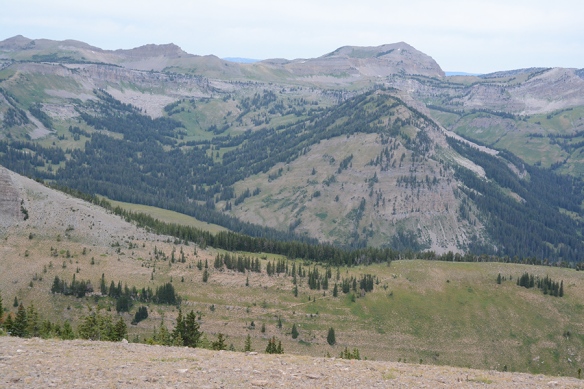
we were delighted to find so many wildflowers – from early summer favorites to late season popups – blooming together.
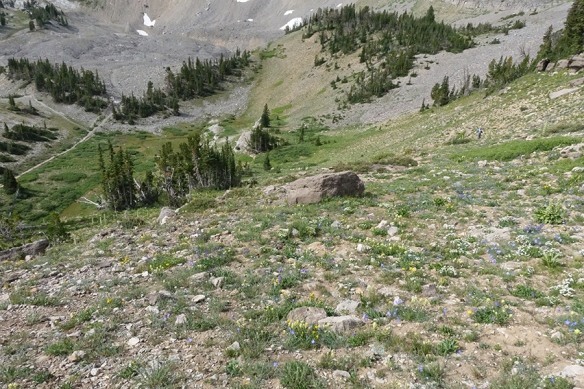
This spring snows were deep and melted late on slopes and basins in the irregular and spectacular topography of the mountains. Consequently, there was an unexpected crescendo of bloom at the end of a summer-long symphony of flowers.
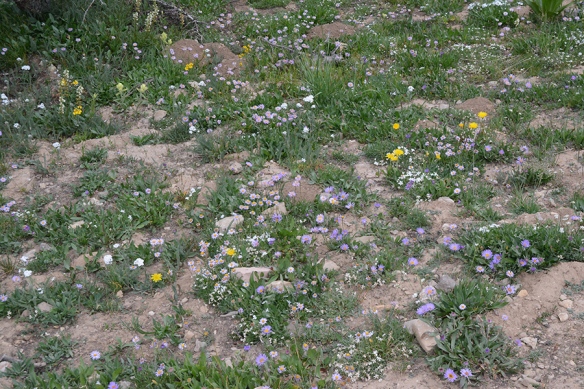
While we took the tram up and hiked only a few miles, others of you may be able to hike farther and higher to find additional locations still colorful with wildflowers.
Below is a showcase of flowers on Rendezvous Mountain with habitat and ID tidbits. Avid or novice wildflower watcher, please enjoy!
The very top of the ridge in loose rocks and drying winds
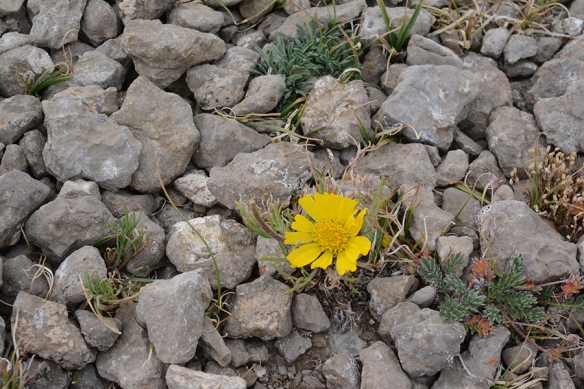
A few Old-Man-of-the-Mountain – Hymenoxys grandiflora – still bloom among the gravelly soils. They indeed look like wizened sages of the alpine.
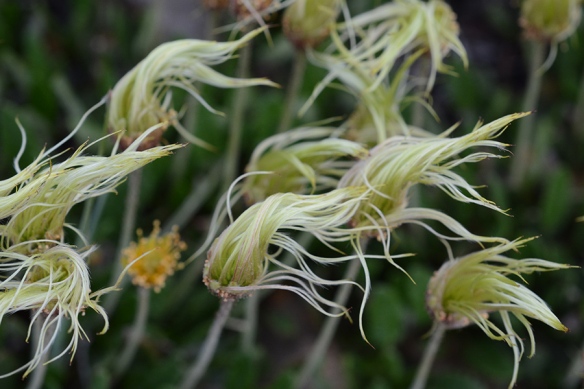
Mountain Dryad – Dryas octopetala – a member of the Rose Family which can fix its own nitrogen, inhabits these lean, exposed soils, growing in very low mats. After its saucer-like yellow flowers are pollinated, they produce twisted clusters of fruits
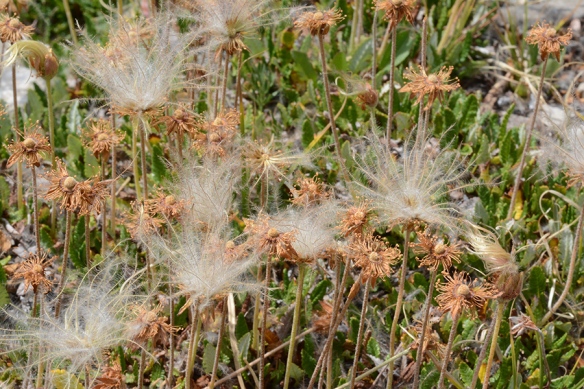
which will fly off individually to find a place to germinate in time.
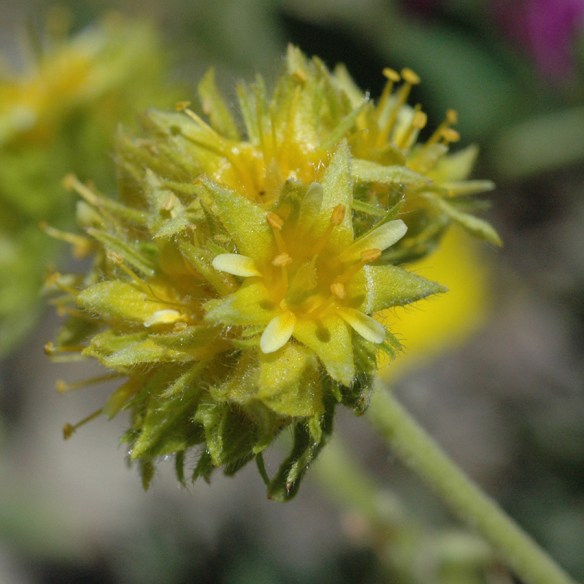
Gordon Ivesia – Ivesia gordonii – has tight heads of several yellow flowers that are beginning to fade. The “pinnately-divided” leaves are at the base: the tiny, hairy leaflets branch off from the center of the leaf. This is also in the rose family.
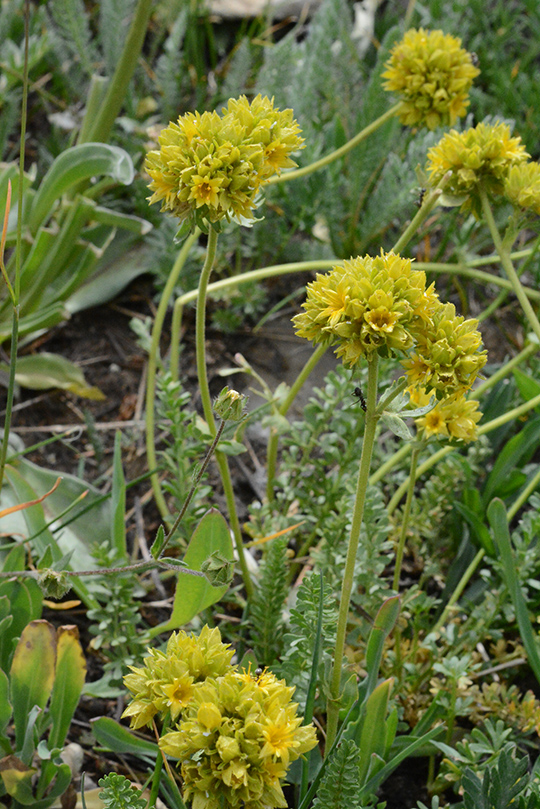
D—! Yellow Composites:
Two spreading yellow composites can form large patches of yellow:
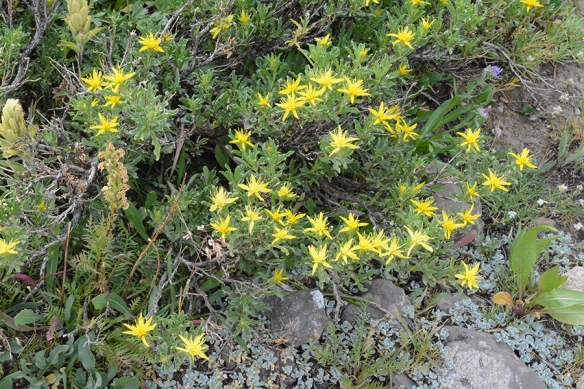
Shrubby Goldenweed – Haplopappus suffructicosus – is finishing bloom along the mountain shoulder. The whole plant is glandular and fragrant. Wide-spreading flowers are at the tips of 1-2’ woody stems. The oblong 1-2” leaves alternate up the stem.
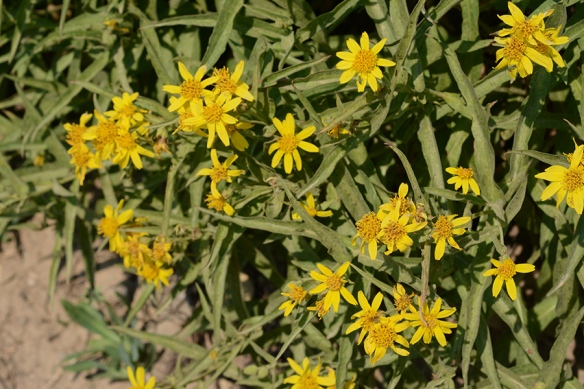
Longleaf Arnica – Arnica longifolia – is just beginning to flower near the summit. The largest of of our arnicas, these 2-2.5’ tall stems have 5-10 pairs of long opposite leaves, and several relatively small yellow flower heads at the top.
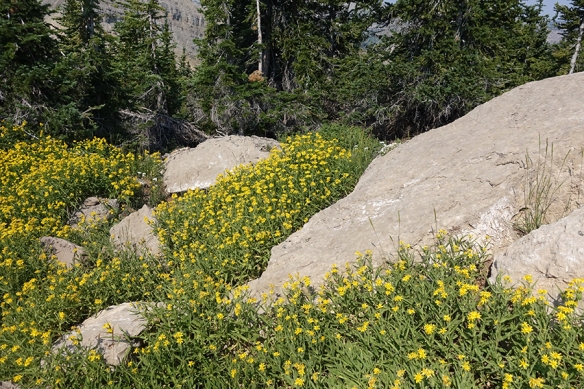
Largeleaf Arnicas form extensive colonies in rocky seeps and wet talus visible from the tram.
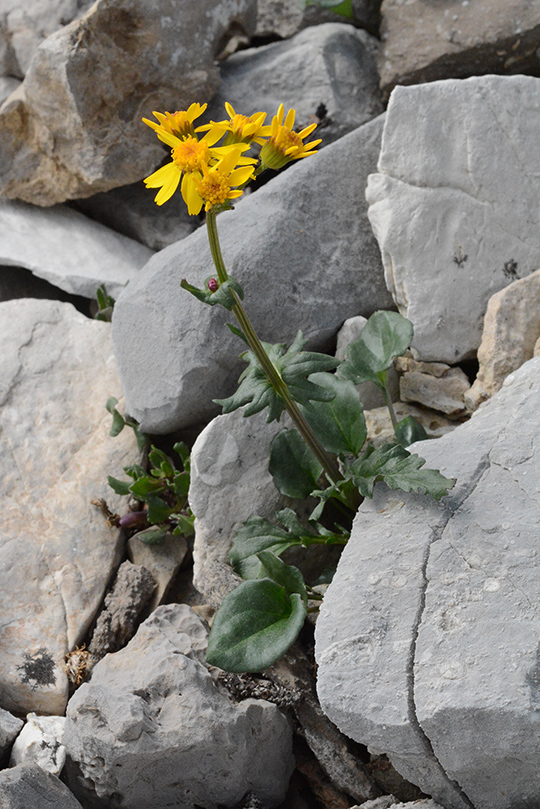
Two-leaf Groundsel – Packera/Senecio dimorphophylla – is a high-elevation species with succulent leaves, including at least one relatively large, slightly lobed leaf clasping the stem. The “two-leaf” of the name indicates the great variety in leaf shapes that adds to ID woes.
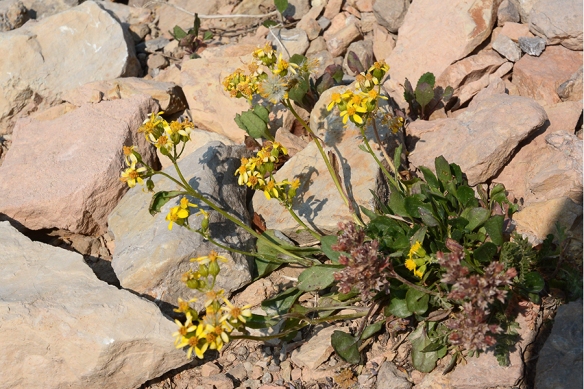
It can be mistaken for another mostly lower-elevation Twisted-leaf groundsel – Packera/Senecio streptanthifolia. It has thinner leaves, longer stems to the flowers, and is generally less compact. But they are confusing!
Several species familiar from lower elevations:
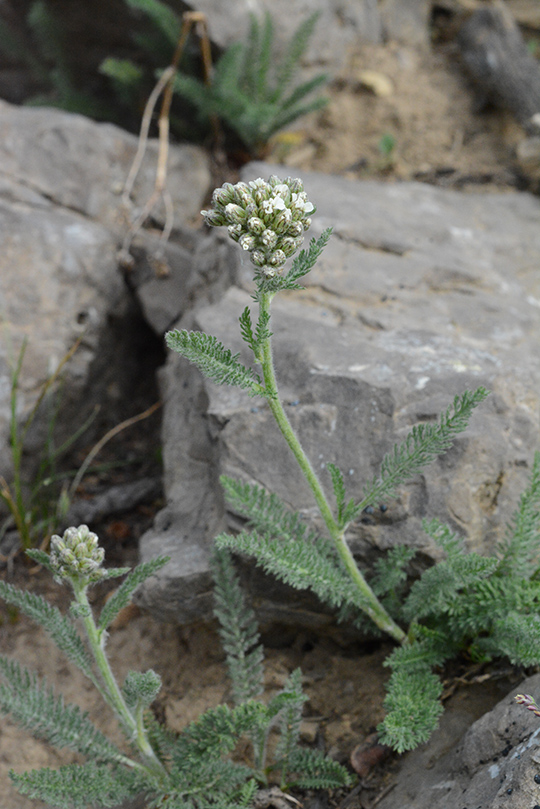
Common Yarrow – Achilea millefolium – is one of the most adaptable and widespread species growing not only within a full range of elevations, but also it spreads around the Northern Hemisphere.
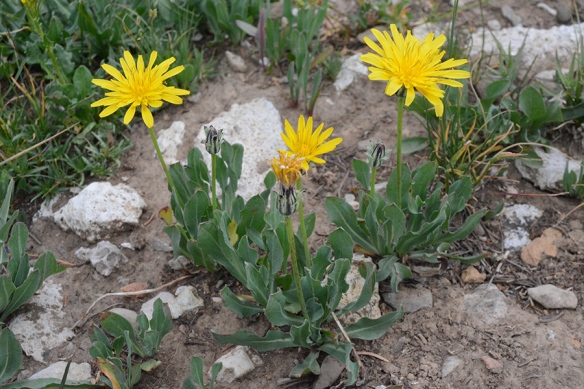
False or Mountain Dandelion – Agoseris glauca var. dasyphyllum – grows to about 6-8” with large heads of ray flowers. This native is commonly seen in the sageflats in May.
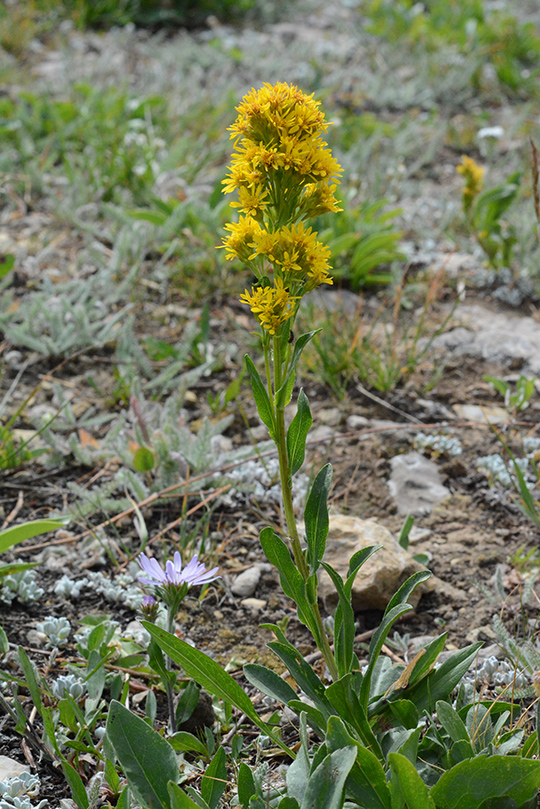
Rocky Mountain Goldenrod – Solidago multiflora – grows from 4” to 18” high depending on elevation and associated conditions. The tiny flowerheads have about 10-20 ray flowers and the lower leaves have “ciliate” hairs on the petioles.
Three Fleabane Daisies and Asters look very similar. They tend to grow 1-2.5’ high with many oval leaves alternating the stem. They have blue flowers. Turn over the flower-heads and look at the “bracts” that form the green protective structure around the base. They are different!
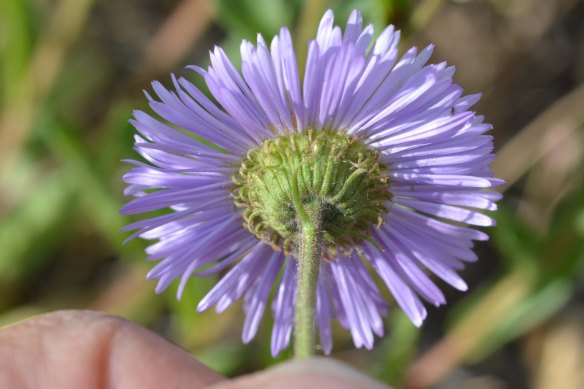
Fleabane Daisies – Erigeron sp. – have narrow, equal-length bracts.
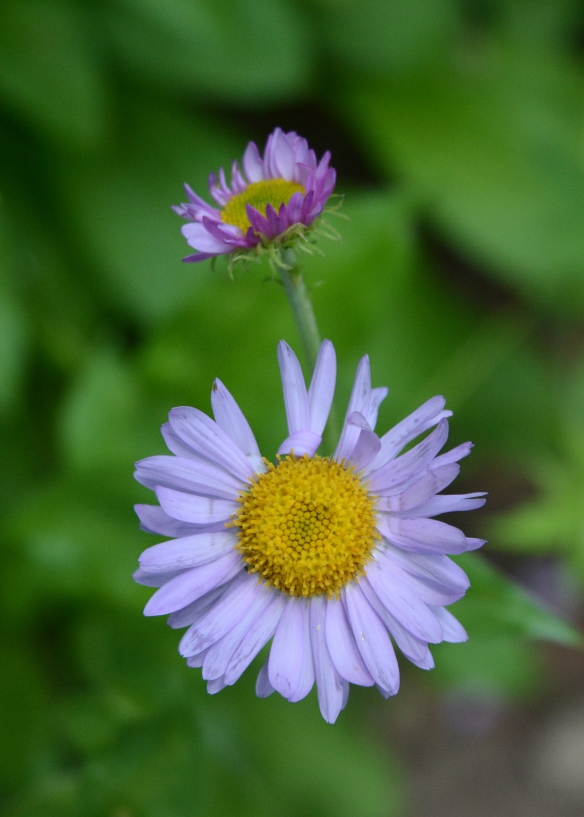
Peregrine Daisy – E. peregrinus has wider ray flowers (they look like petals)
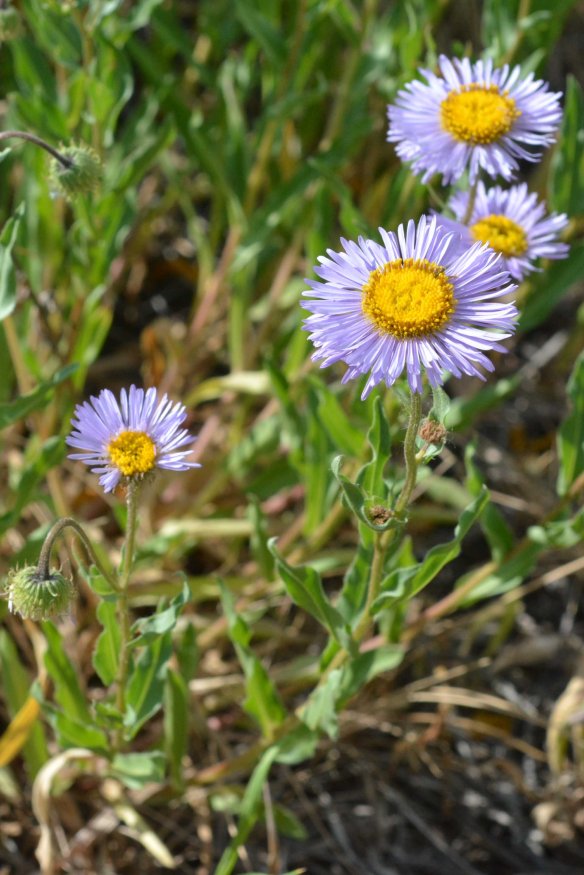
than Oregon Daisy – Erigeron speciosus (above).
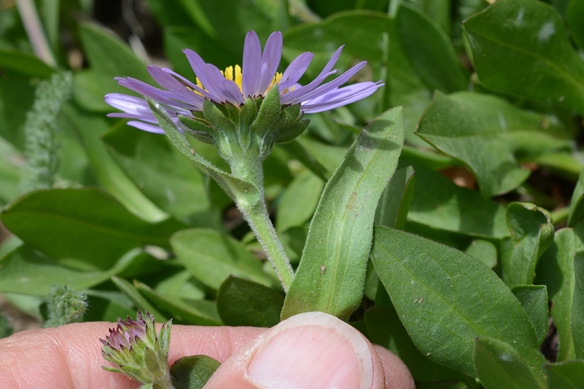
Leafybracted Aster – Symphiotrichum foliaceum – has wide ray flowers (like Peregrine Daisy) but has broad leaf-like bracts. The low growing alpine variety is “apricus” if you are into the details.
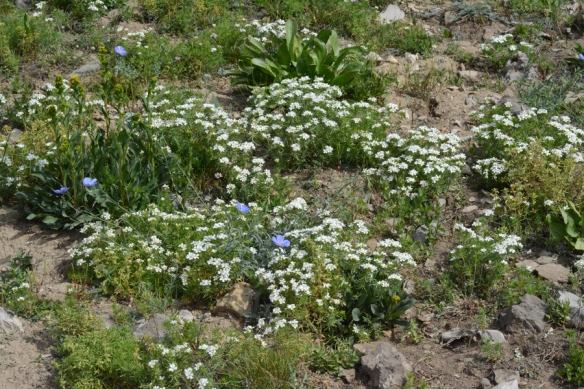
This slope is covered with phlox-like Nuttall’s Leptosiphon – Leptosiphon/Linanthus nuttalii – with dashes of common Lewis’ Flax – Linum lewisii – which are also found at lower elevations.
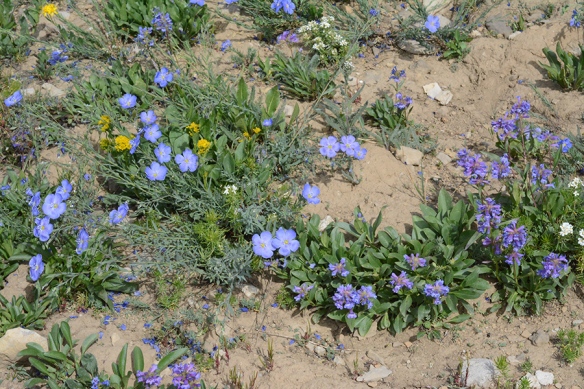
On the same slope is a mix of blue flowers: flax and penstemon.
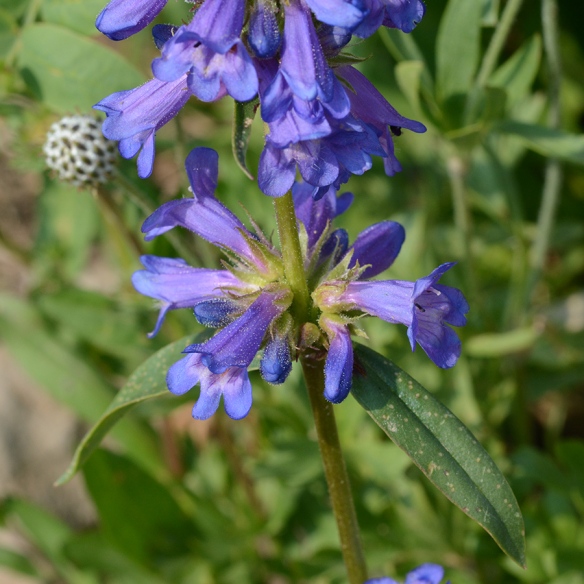
Thin-stem Penstemon – Penstemon attenuatus – seems to be one of the most common of the confusing beard-tongues. I look for the glandular hairs on the flowers, acute sepals, and inside the smooth anthers spreading at 180 degree angle to help with ID. In any case penstemons have opposite leaves, blue “irregular” flowers with curled up stamens along with a “beard’s-tongue” inside.
These subalpine species grow in patches with sufficient moisture and nutrients :
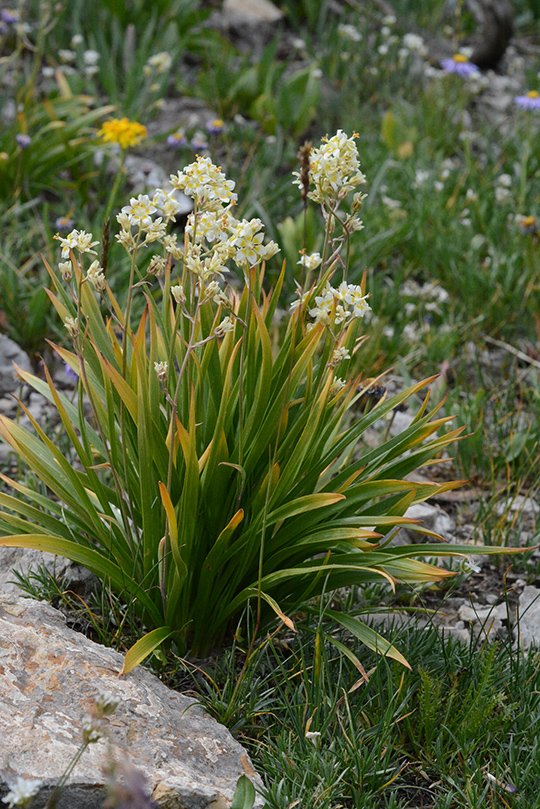
Death Camus – Zigadenus elegans – has beautiful whitish green flowers with heart-shaped yellow pools of nectar on the the 6 petals (technically here called tepals).
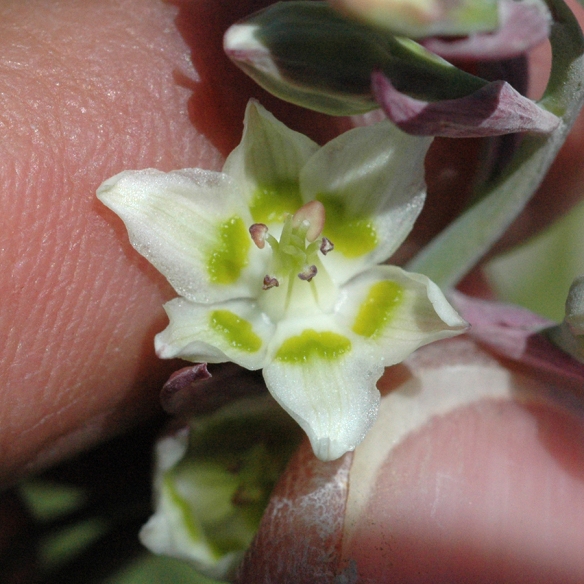
It has 6 stamens that stand around the center pistil which has 3 stigmas. Flower parts in multiples of 3 is a good indication that it is in the Lily Family. Compare it to your Easter Lily.
![]()
Coil-Beak Lousewort – Pedicularis contorta – has 1-foot+ stalks arrayed with white flowers that twist around their bee pollinators to position them for prescise fertilization. The lower leaves are pinnately divided, helping to differentiate it from the similar Curled Lousewort – P. racemosa – whose leaves are only toothed.
![]()
Here Coil-beak Lousewort grows with Sulphur Paintbrush – Castilleja sulphurea.
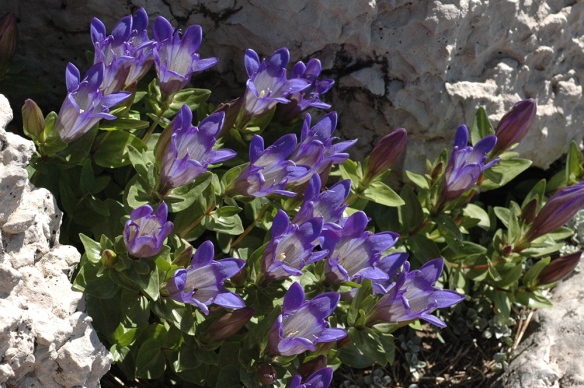
Bog/Explorer’s Gentian – Gentiana calycosa – greets you with blue goblets of flowers.
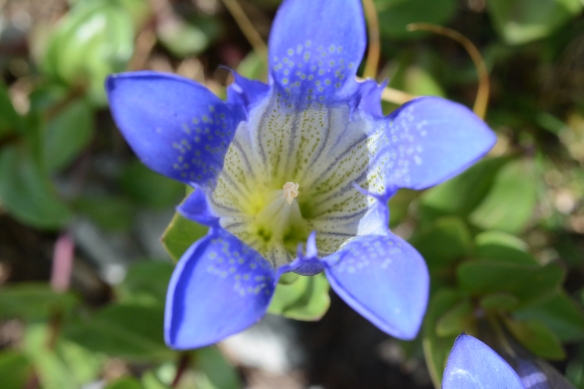
The interior lines and spots draw pollinators deep inside searching for nectar which is at the very bottom. As a consequence, the pollinator rubs against the male anthers or female stigma (they are receptive at different times) effecting fertilization for new seeds to come.
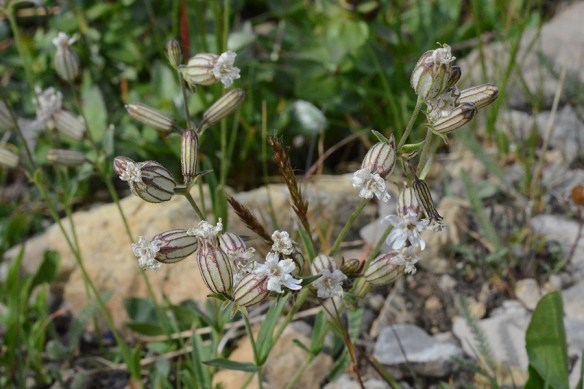
Parry’s Catchfly – Silene parryi – has a swollen calyx decorated with elegant lines: They glow like Chinese lanterns. This alpine native is related to the common, weedy bladder campion – Silene latifolia – that pops up in our gardens.
Tucked into talus rock of Cody Bowl:
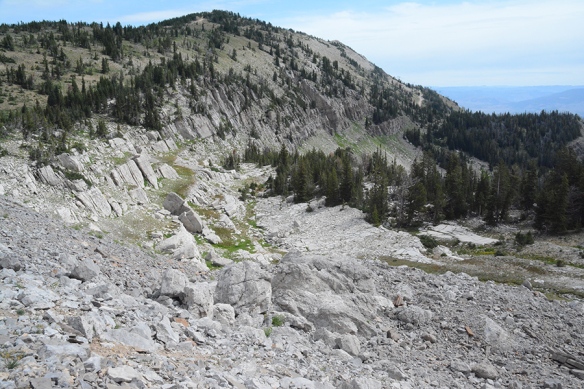
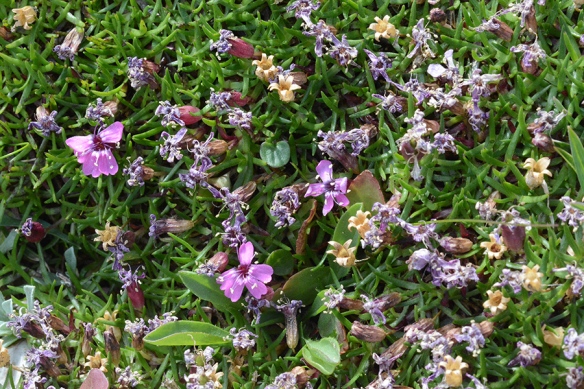
Moss Campion – Silene acaulis – is often the first alpine to bloom. This tightly growing, mounded “cushion plant” is still blooming and is also forming fruits. Plants a few inches across and an inch high can be dozens of years old. This is related to the much larger Parry’s Catchfly (see above). Both are related to carnations!
Two miniature 2-4”-tall aster-like plants are readily confused (by me anyway!). They have single blue flowerheads at the top of short stems. The leaves are mostly clustered at the base:
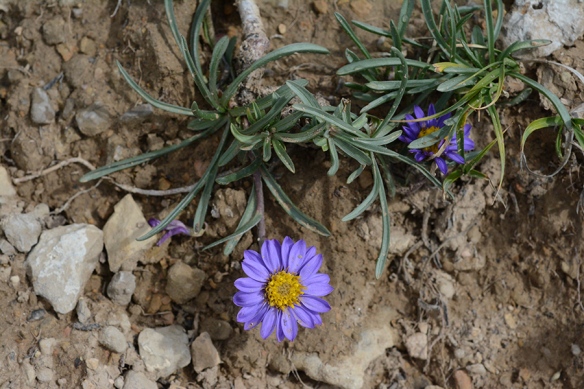
Alpine Aster – Oreostema alpigenus – has deep-blue flowers and long leaves. Note the long tap root that has been unearthed. These are very old plants.
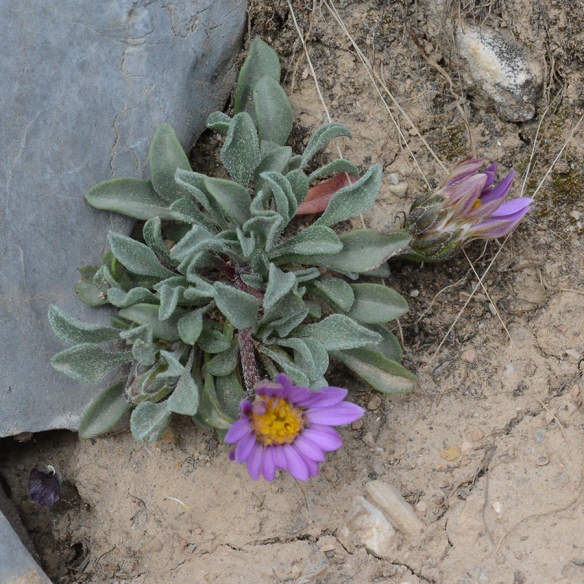
Alpine Townsendia – Townsendia montana – has much shorter, spoon-shaped leaves.
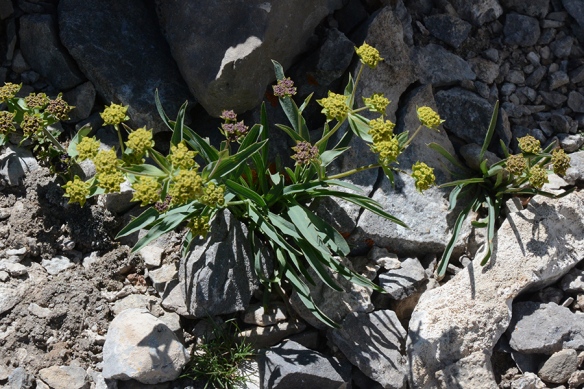
American Thorowax – Bupleurum americanum – is a member of the Parsley Family with an umbrella-like arrangement of flowers and fruits.
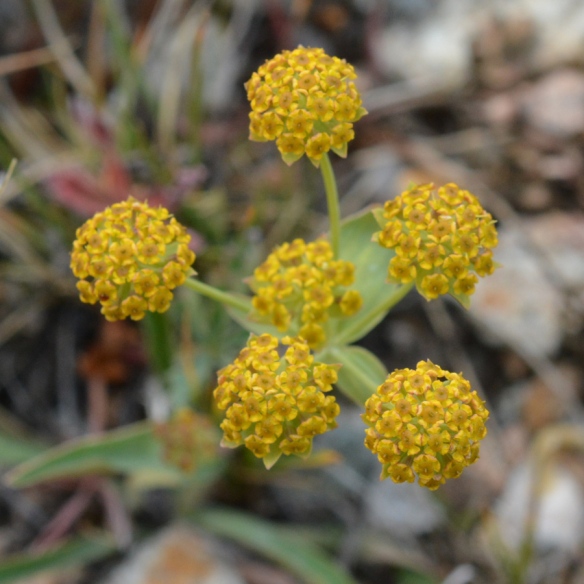
This species is unusual in having undivided leaves. It is common among the rocks here.
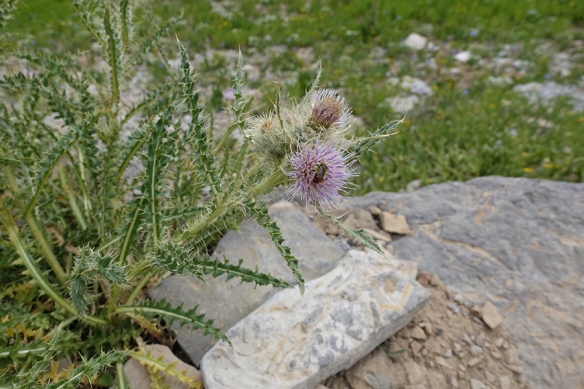
Tweedy’s Thistle – Cirsium tweedyi/eatonii – sprawls out of the rocks attracting a variety of pollinators. It is definitely one of the “good” thistles and is a native found only at high elevations.
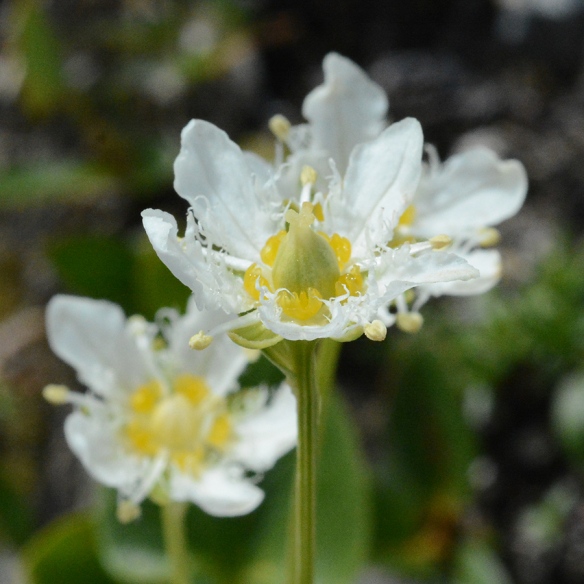
Fringed Grass-of-Parnassia – Parnassia fimbriata – is worthy of a close look at the frilled petals, lobed yellow nectaries, sculpted pistil. The oval leaves are also elegant. These plants like moisture.
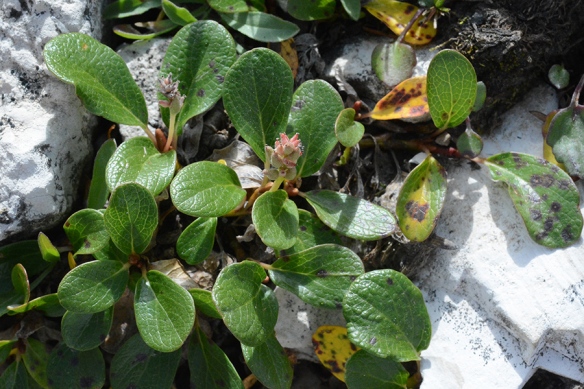
Netveined Willow – Salix reticulata – Willows are common and confusing in the alpine zones (and elsewhere!) This very low-growing species has small rounded leaves with distinctive veins (reticulate) making it is pretty easy to ID, I think…
Truly on the rocks:
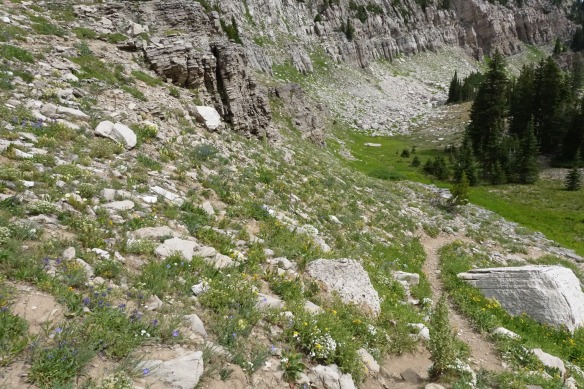
Miraculously, several plants cling onto rock faces such as found along the Rock Springs Loop trail below Cody Bowl.
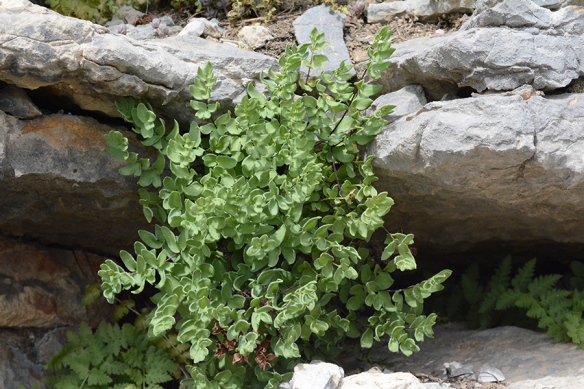
Brewer’s Cliffbrake Fern – Pellea breweri – was a new one for me. Black wiry petioles (stipes) hold out leathery evergreen leaflets.
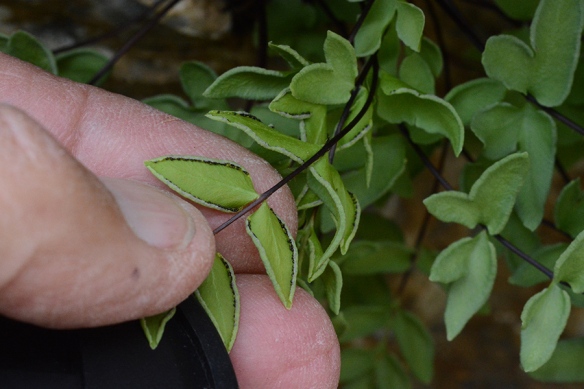
The black sori are protected by the folded leaf edges. Sori produce the spores that are key to reproduction in ferns.
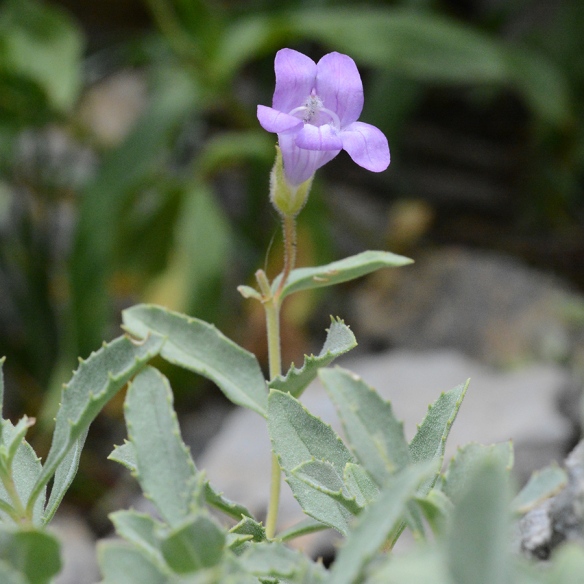
The pale lavender flowers of Mountain Penstemon – Penstemon montanus – are fading, but are still a treat to see. The plants are slightly woody and have toothed leaves (unusual for our WY species). The anthers are woolly.
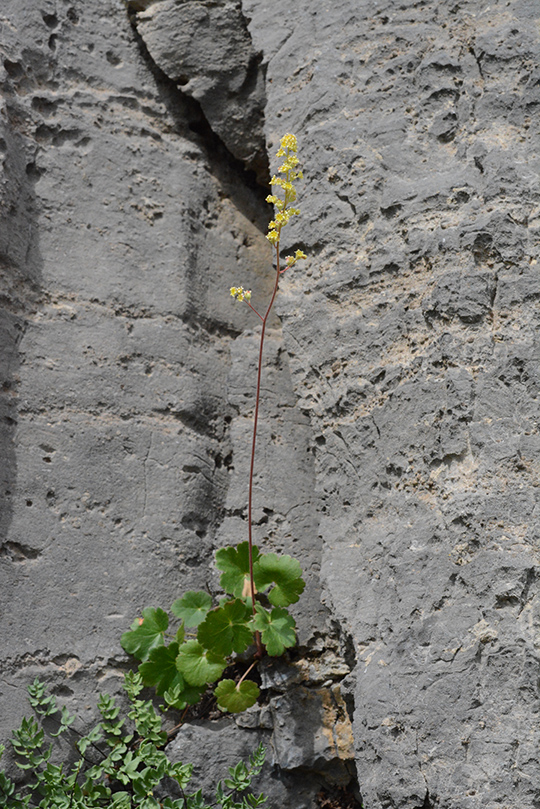
Common Alumroot – Heurchera parvifolia – is a true rock lover! It is in the Saxifrage Family. Saxi = rock
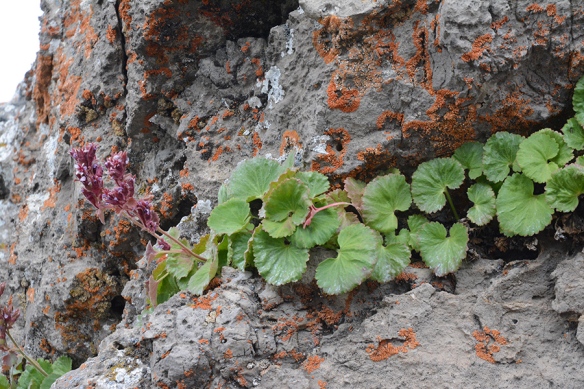
Telsonix/Boykenia – Telesonix heucheraformis thrives in a rock crevice of a large glacial erratic on the way down to Cody Bowl. You may be able to see some family resemblance with Alumroot.
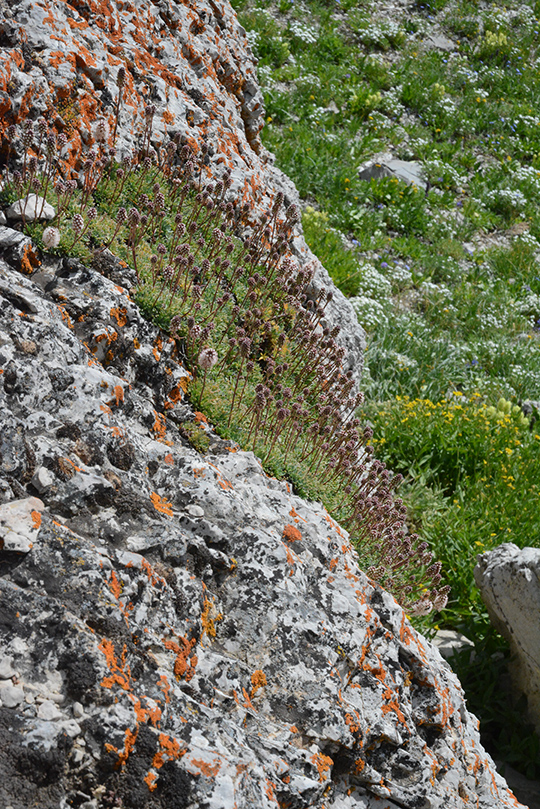
Tufted Rockmat – Petrophyton caespitosum – forms a dense carpet draped over a ledge.

No matter how you look at these plants, one can appreciate their adaptability and tenacity, growing in this challenging terrain—rock, snow, abrasive winds, drought, intense UV light, not to mention a growing season of maybe a couple of months. And consider the luck of a seed to land in the right spot in the first place and mature and reproduce throughout many years of such trials.
If you don’t get up to admire these floral athletes this year, they will be there next year to enjoy on your alpine adventures.
Frances Clark, Wilson, WY, August 24, 2019
*Note: Check on the trail conditions through the JH Mountain Resort before taking this hike. At thie time of writing, the summit-access road was closed for construction projects. High elevation and rocky trail can be difficult for some hikers. Saying that we, were able to reach safely a wonderful display of flowers from the trail!
